Seedlings are one of the first plants to hit our gardens in spring! It is a very exciting moment to finally be able to get out there and plant some seedlings. Then just provide them with good care and they will reward you with a harvest to fill your plates and pantry. Every gardener loves seedlings. If you are not familiar with the seedlings, what they are, and how to grow them, I invite you to sit down and have a good read about seedlings, and much more!
A seedling is a young plant grown from seed. Seedling’s first leaves that emerge out of the ground are called cotyledons. The next set of leaves after the cotyledons are the first set of true leaves.
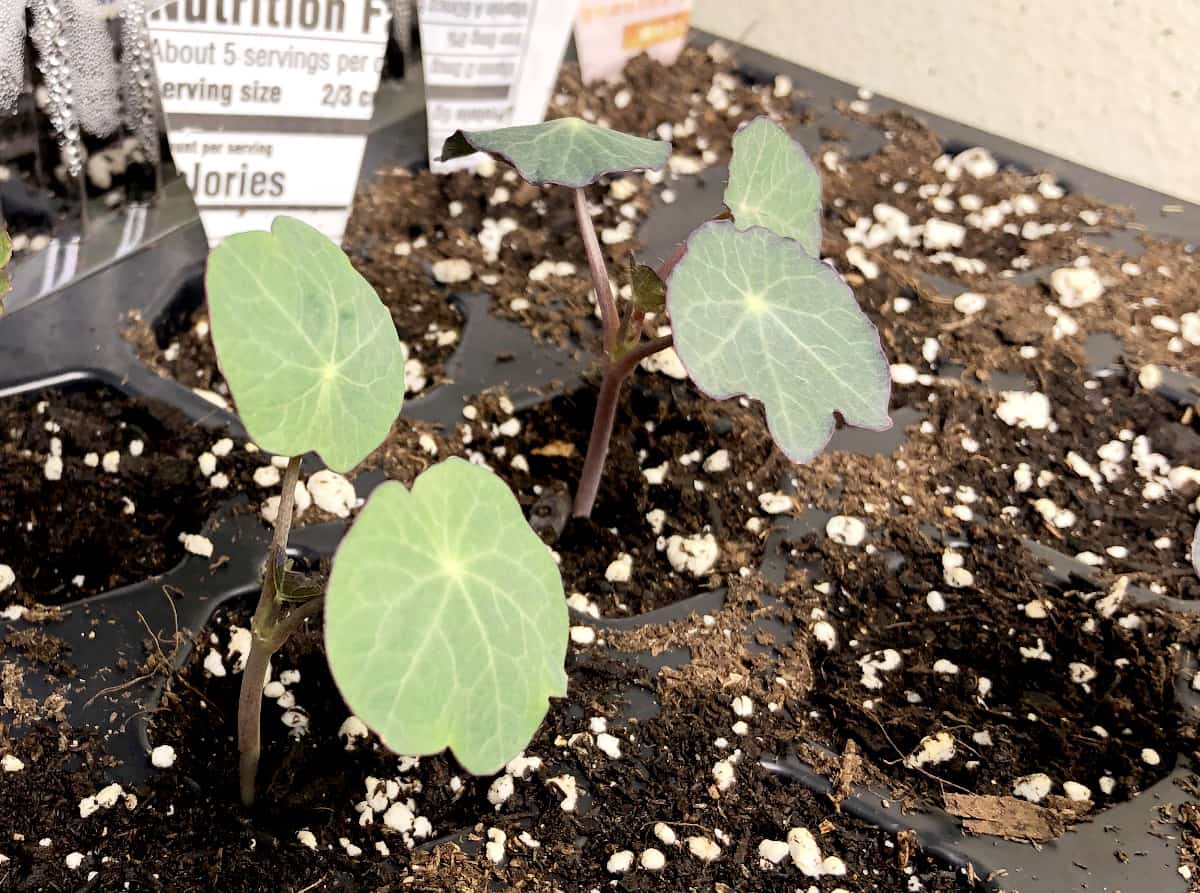
How long does it take for a seed to become a seedling?
Most seeds usually germinate within a week after they have been planted in moist, soil at the right temperature. Some seeds need more time to germinate. Seeds like asparagus, parsley, and okra take a few weeks to germinate. The harder the shell of the seed the longer it might take for the seeds to germinate. Smaller seeds with tender shells tend to germinate faster than larger seeds with hard shells.
What do seeds need to germinate properly?
Seeds need warmth, moisture, and oxygen to germinate properly. Most seeds germinate when the soil temperature is between 68F-86F.
How to germinate seeds
To germinate the seeds, fill the seed tray with a seed-starting mix or a potting mix. Plant the seed according to the information on the packet they came with. If there is no sowing information on the packet, the rule of thumb says to plant the seeds at the depth of three times the width of the diameter of the seed. Place the seed in a hole and cover the seed with soil. Moist the soil well with mist. If the seed is watered with a strong flow of water, the seed might get uncovered by the water flow, it can be pushed deeper into the soil, or flushed out and displaced. After the seed has been sowed, keep the soil moist all the time, and do not let it dry out.
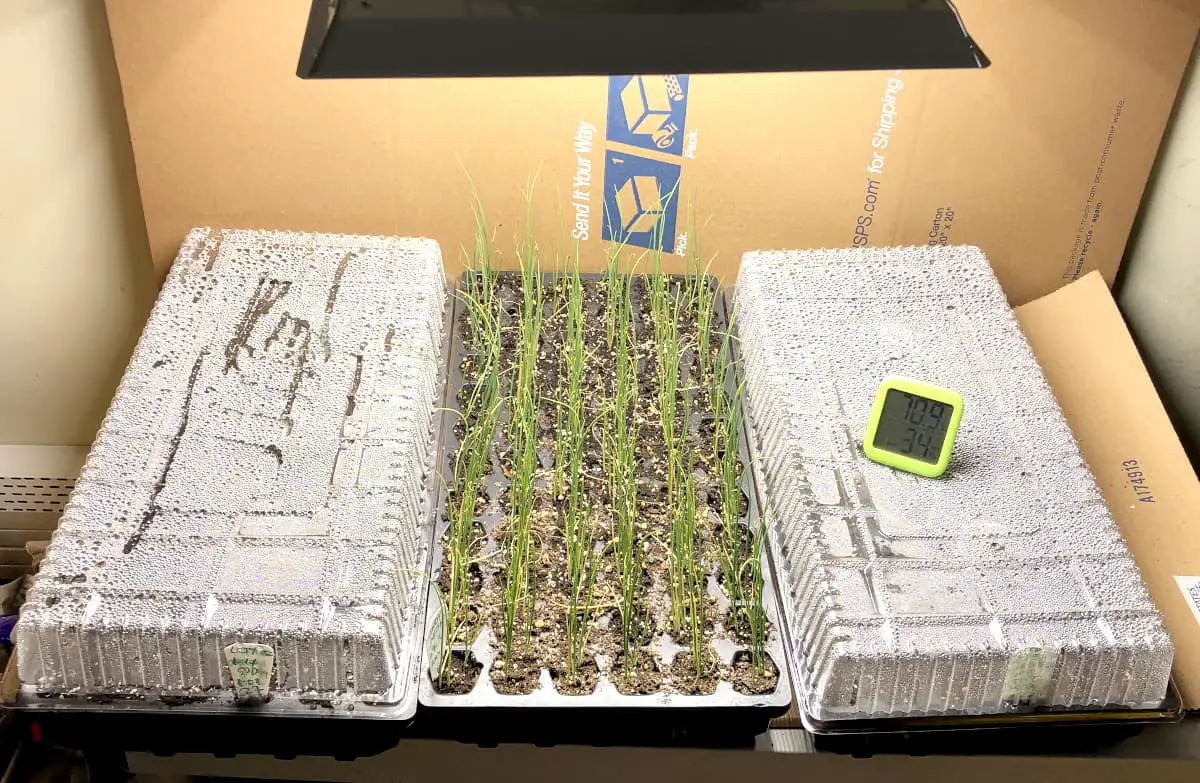
If the soil in which is the seed sowed dries out the seed can wither and die after it started to germinate. Or it can stress the seed and slow down the germination process.
How to germinate seeds faster
Seeds can be encouraged to germinate faster. For the seeds that have a tougher shell, they can be soaked. This works especially well for large seeds and seeds with a hard shell, like corn, bean, and pepper seeds. Seeds can be soaked in warm water for 6-48 hours, depending on the size of the seeds and the hardness of the shell. During soaking the seed plump up or swell and the shell softens. Plant the seeds after they seed has been soaked well, according to the planting instruction on the packet or as described above. Keep the soil moist during the germination process.
Another way to encourage the seeds to germinate faster is to envelope them in a moist paper towel and place the enveloped seeds in a zip-lock bag. The zip-lock bag will keep the seeds moist and warm. Soak the paper towel in warm water. Envelop the seeds in the paper towel so it touches the seed’s shell. Place the seeds wrapped in the moist paper towel in the zip-lock bag and seal it. Keep the zip lock bag with the seeds in a warm place for the seeds to soak and keep warm at all times. Check on the seeds periodically. If needed moisten the paper towel. The same method can be used but instead of a zip-lock bag, a sealable container can be used.
Another way to help the seeds germinate faster is to simply use a humidity dome on the seed tray. If you use regular commercial seed trays, get the ones that come with a humidity dome. Plant the seeds in the seed trays and moisten them with warm water. Then cover the seed trays with a humidity dome to lock the moisture and warmth in. To keep the seeds constantly warm, use a heating pad under the seed tray. Or like I do, I place my seed trays covered with a humidity dome under the grow lights to keep them warm.
Most seeds do not need light to germinate, so they can be kept in a moist, warm, and dark place. Some seeds need light to germinate. If the seeds need light to germinate, the information is usually written on the packaging.
Most importantly the seeds need to be kept moist and warm till they germinate.
After the seed sprouts, it is the beginning stage of the seedling. The sprout will emerge from under the soil with its first set of leaves called cotyledons. These leaves do not look anything like the true leaves of the plant you planted. The second set of leaves is called the true leaves. These already resample the leaves the plant is supposed to have. You just grew yourself a little seeding.
Once you have grown a seedling, they need different attention and care than seeds do.
What do seedlings need to grow properly?
- Seedlings need adequate light, moisture, air, and proper temperature to grow properly and healthily.
- Seedlings need to be kept warm at temperatures between 65F-75F, which is best for most seedlings.
- They need to be kept moist, so ensure the soil is moist and never dries out. The seedlings’ roots are very shallow and few. It will take time for the seedling to extend the root system. Keep the seedlings in moist soil as they grow in a content space with shallow roots. They have no ability to draw water from elsewhere. If you soil in which the seedlings are planted dries out it stresses the seedlings, the seedling might wither and die in a couple of hours, because it is still very tender. Wilted leaves might be the first sign the seedlings need to be well watered. Water deeply but do not overwater. Yellow leaves can be the sigh the seedlings are overwatered.
- Seedlings need lots of bright light. The fluorescent or LED light will usually be the best choice for the seedlings. They need light for long hours anywhere between 14-16 hours a day.
- Keep the area around the seedlings airy, not closely confined, and without air circulation. A regular room and greenhouse have good air circulation. Do not close the seedlings with a humidity dome or in a large container as this will deprive them of air.
- Inspect the seedlings regularly for disease, insects, or adequate moisture. If the seedlings are overwatered or underwatered, they will send warning signals, like wilted leaves and stems yellow leaves, and dry soil on the surface. Overwatering might cause the growth of white and green mold on the soil. Never let the seedlings sit in water. Check if the water is not left in the bottom of the dray and discard excess water if it is found on the bottom.
- If using grow lights, ensure the distance between the light and the seedlings is correct. The light might burn the seedlings if they are too close. If the light is however too far, the seedlings might grow tall and thin, also called leggy or stretchy, spindly. Ensure the light are about 12 inches from the seedlings or lower as long as the leaves are not burned and the seedlings are not getting leggy.
What is a leggy seedling?
A leggy seedling is a seedling with a thin, skinny, spindly stalk and small leaves. This is a sign that the seedlings are light-deprived. It is stretching to reach more light. As soon as you see this sign, provide more light, or move the seedling closer to the light source. Stretchy or leggy seedlings are weak to support the whole plant with the weight of leaves and fruit on it.
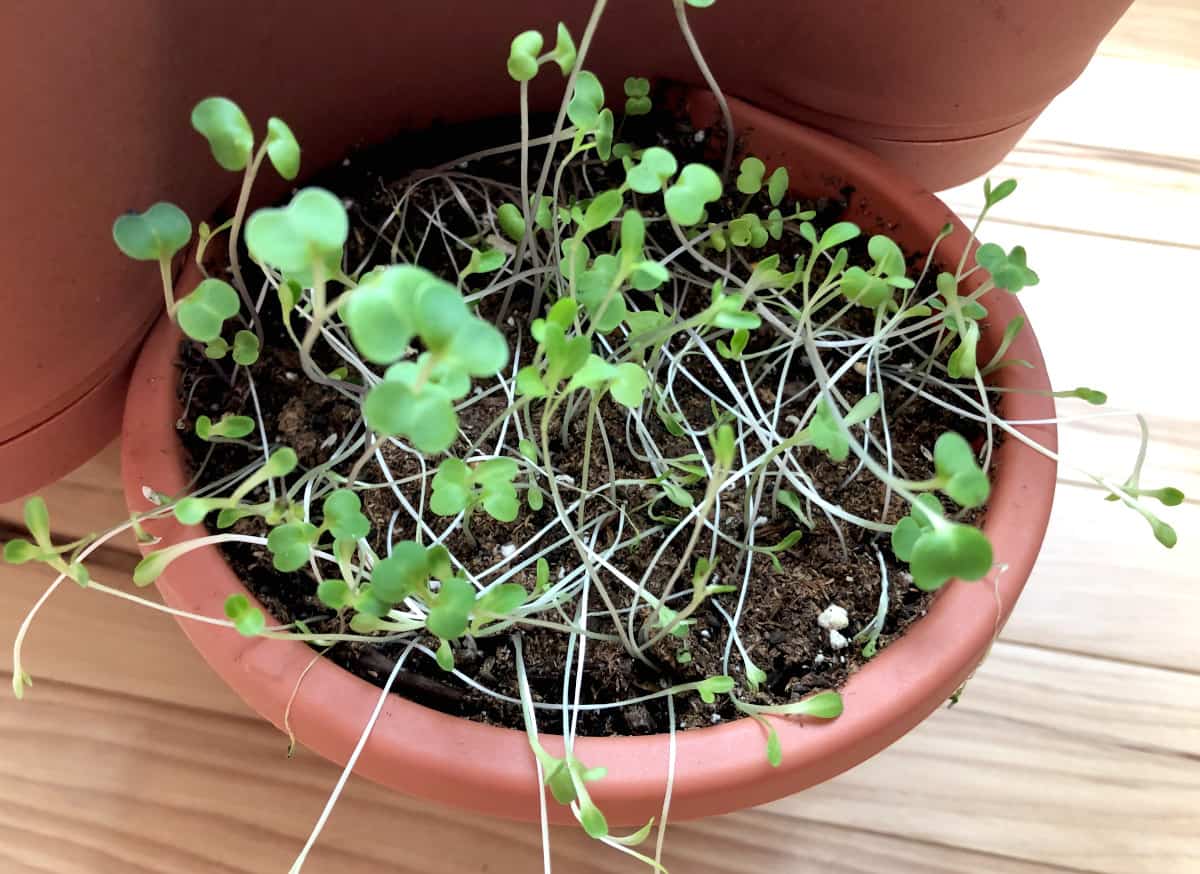
What does a healthy seedling look like?
A healthy seedling has a strong, rather short, and wide stem that is able to support the weight of leaves, fruit, and additional growth of the plant. The leaves are healthy green, or the color the plant should be. The leaves are not wilted, curly, yellow, or brown, without holes, spots, or any sign of a disease. If the leaves of the plant get curly, yellow, brown, or wilted it is a sight problem that the plant is dealing with. Address the problem and treat it as soon as you see the sign appear.
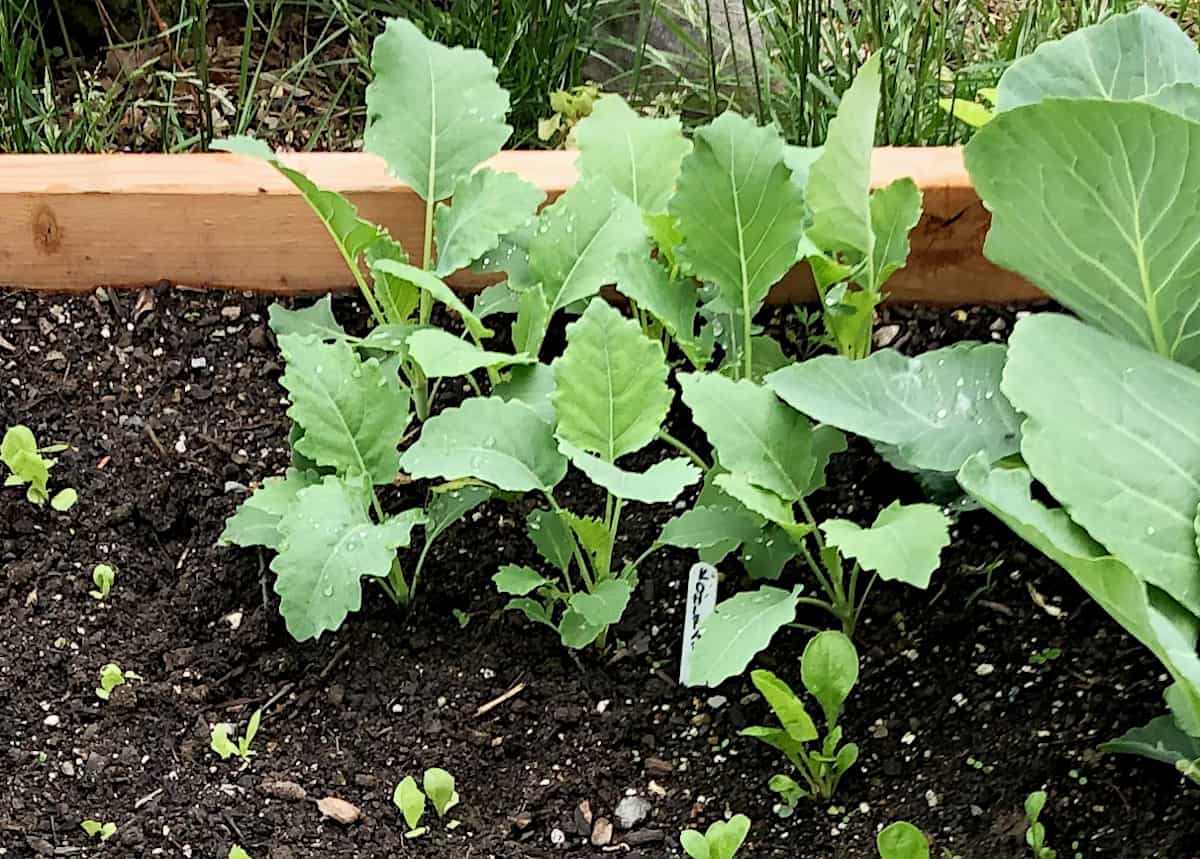
A healthy seedling will provide a healthy harvest. But a weak and sick seedling will perish, might not fruit, or will have weak fruit.
What are some common seedling problems?
Some of the most common seedling problems include damping off, yelling of the leaves, leaf curling, wilting of the stem, wilting of the leaves, brown leaves, and crumbly leaves.
What is damping off?
Damping off is a plant disease that occurs in excessively damp conditions, it is a fungal infection that affects young seedlings.
What are the signs of damping off?
When your seedlings suffer damping off, the seedlings stem looks like it is soaked with water, while the bottom of the seedlings starts to wither and turns into a mush. The seedlings then collapse, falls over, and die.
How to treat damping off?
Unfortunately, there is no cure or remedy to treat damping off. It can only be prevented. The seedlings that suffer damping off are not salvageable. To prevent damping off, provide good air circulation and do not overwater the seedlings. If needed use a fan to circulate the air around the seedlings. Ensure the plants are sowed in clean seed trays and use high-quality planting material.
Why are the seedling’s leaves yellow?
Yellow leaves might be a sign of overwatering, underwatering, poor soil drainage, or nutrient deficiency. If the soil is too moist, the leaves will turn yellow. Hold back on watering and provide your seedlings with less water. Ensure the seedlings are not sitting in water. If the soil is moist but not overwatered and the leaves are still yellow, it might be a sign of nutrient deficiency. Feed your seedlings with nitrogen and phosphorus-rich feed. Ensure the soil is not dry so the seedings do not suffer drought.
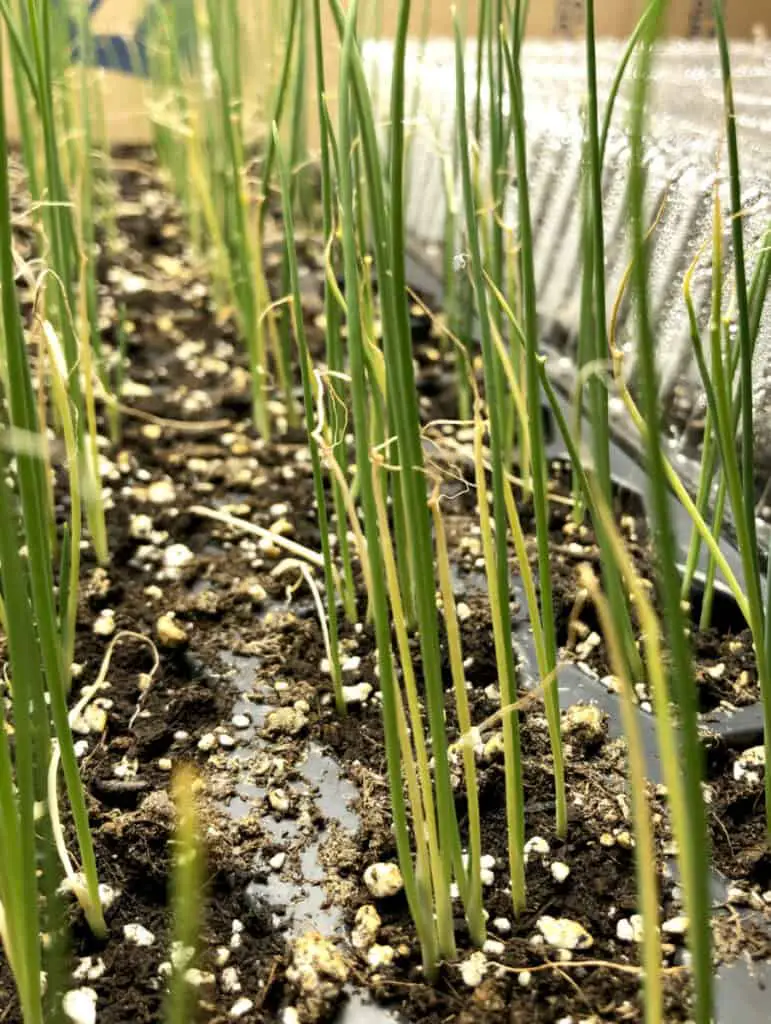
Growing seedlings from seeds you will for sure encounter problems with seeds, germination, or seedlings. Those are all the problems we all come across, and they are the opportunity to learn from to avoid them next time. They are also an opportunity for us to prevent them, treat them, and add to our gardening experience.
I would like to give you a hand with your gardening endeavor, which is why I have written several articles that you might need to read through addressing the problems you might encounter. Read here, What are some common seedling problems. And What are some common seed-starting problems?
Beautiful and healthy seedlings start by planting healthy, viable seeds. Planting only high germination rate seeds will open a way to better success. If you store the seeds you grow yourself, or if you source the seeds from multiple sources you can test the seeds for their viability. There are several ways to find out if the seeds you are about to plant are viable. To learn How to find out if the seeds are viable, click here!
A non-viable seed is a dead seed that will not germinate and will not grow into a beautiful seedling. Testing the seeds especially when the seeds have been sitting in storage for some time is a good way to ensure germination success.
Once the seedlings are mature enough it is time for them to be hardened off and planted outside in their permanent spot in a garden. Hardening off the seedling is an important step in which the seedlings are transitioned from the controlled environment into the uncontrolled environment outdoors with all the natural elements they will have to face. Preparing the seedings gradually helps them to adjust to the outdoor elements. During the hardening off, the seedlings will have a chance to harden off, toughen up and avoid transplant shock.
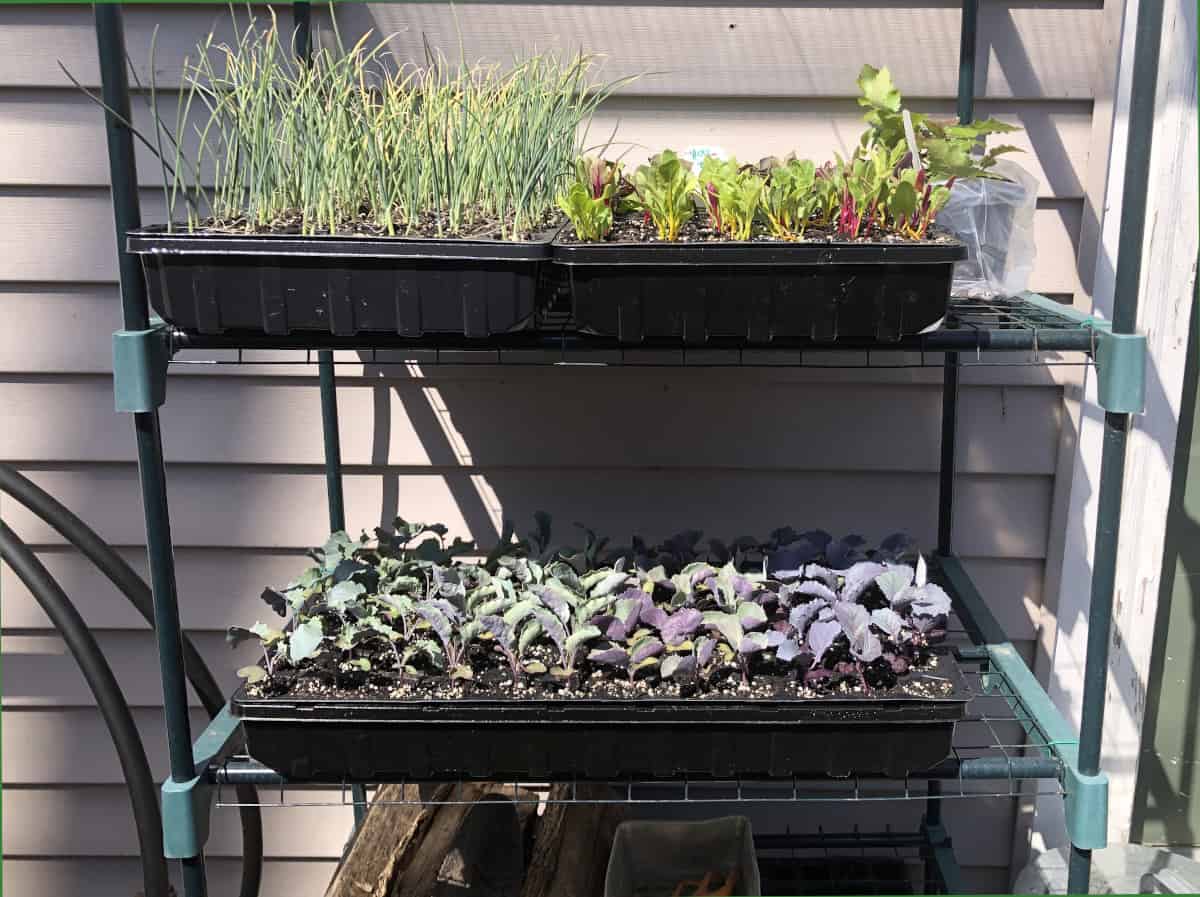
Read here, What is plant hardening and How to harden off seedlings. These two articles will provide you with the knowledge you need to prepare the tender seedlings for planting them outdoors correctly. There, I talk about how to know when the seedlings are ready to be hardened off and when they are ready to be planted outdoors, as well as why is the process of hardening off the seedlings so important not to skip.
When and how to plant a seedling
How to start seeds and care for seedlings
What are some common seedling problems?

